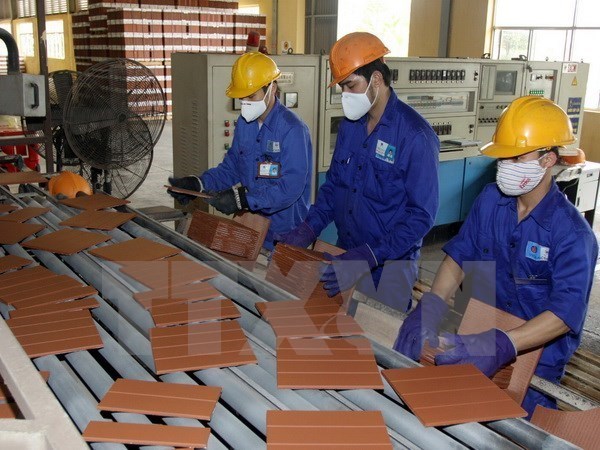
A tile production line of the Viglacera Ha Long company (Photo: VNA)
According to a report at a working session in Hanoi on June 18, the building material industry has continually been invested and developed over the past years. The design capacity and production output of some products have risen twice or thrice compared to 10 – 15 years ago. Thanks to product diversity and quality meeting developed countries’ standards, the sector has met the growing domestic demand and had its products exported.
In particular, Vietnam is currently the fifth biggest cement manufacturer in the world, after China, India, the US, and Russia. Its cement output has doubled within 10 years, from 45.5 million tonnes in 2009 to about 100 million tonnes, turning the country from a cement and clinker importer to the world’s largest exporter of these commodities, with over 30 million tonnes shipped aboard in 2018 – double the figure of Thailand that stood second.
However, there remain a number of shortcomings in the management and development of building materials, participants heard.
Vice-Chairman of the Vietnam Concrete Association Tran Ba Viet said the country ranks fifth in terms of cement production, but the cement export value is still low while this is an energy- and natural resource-intensive sector.
He suggested considering the export of precast concrete blocks that have much higher value while minimizing the shipment of clinker and cement.
Echoing the view, Chairman of the Vietnam Association for Building Materials Tong Van Nga said the country is exporting many cheap building materials. Meanwhile, it has yet to optimize by-products and waste of other industries, such as coal residues of cement and chemical production and thermal power plants, to produce building materials.
At the meeting, Deputy Prime Minister Trinh Dinh Dung said the building material sector has obtained major achievements but is still facing difficulties and challenges, including low content of creativity and added value in products, lack of new products able to compete with regional and global rivals, and insufficient attention to research and development.
He noted the most important task for the industry in the time ahead is meeting domestic demand so as to contribute to the construction sector and socio-economic development.
As global demand for building materials will also increase, the development of this sector will also help boost export, he added.
To that end, a development strategy for 2021-2030, with a vision to 2050, is necessary, the Deputy PM said, requesting that it must associate the sector’s development with modern technology application, natural resources and energy-saving, waste recycle, low carbon emissions, climate change adaptation, and environmental protection./.
VNA
 Tay Ninh determines to achieve double-digit GRDP growth target by 2025
Tay Ninh determines to achieve double-digit GRDP growth target by 2025



